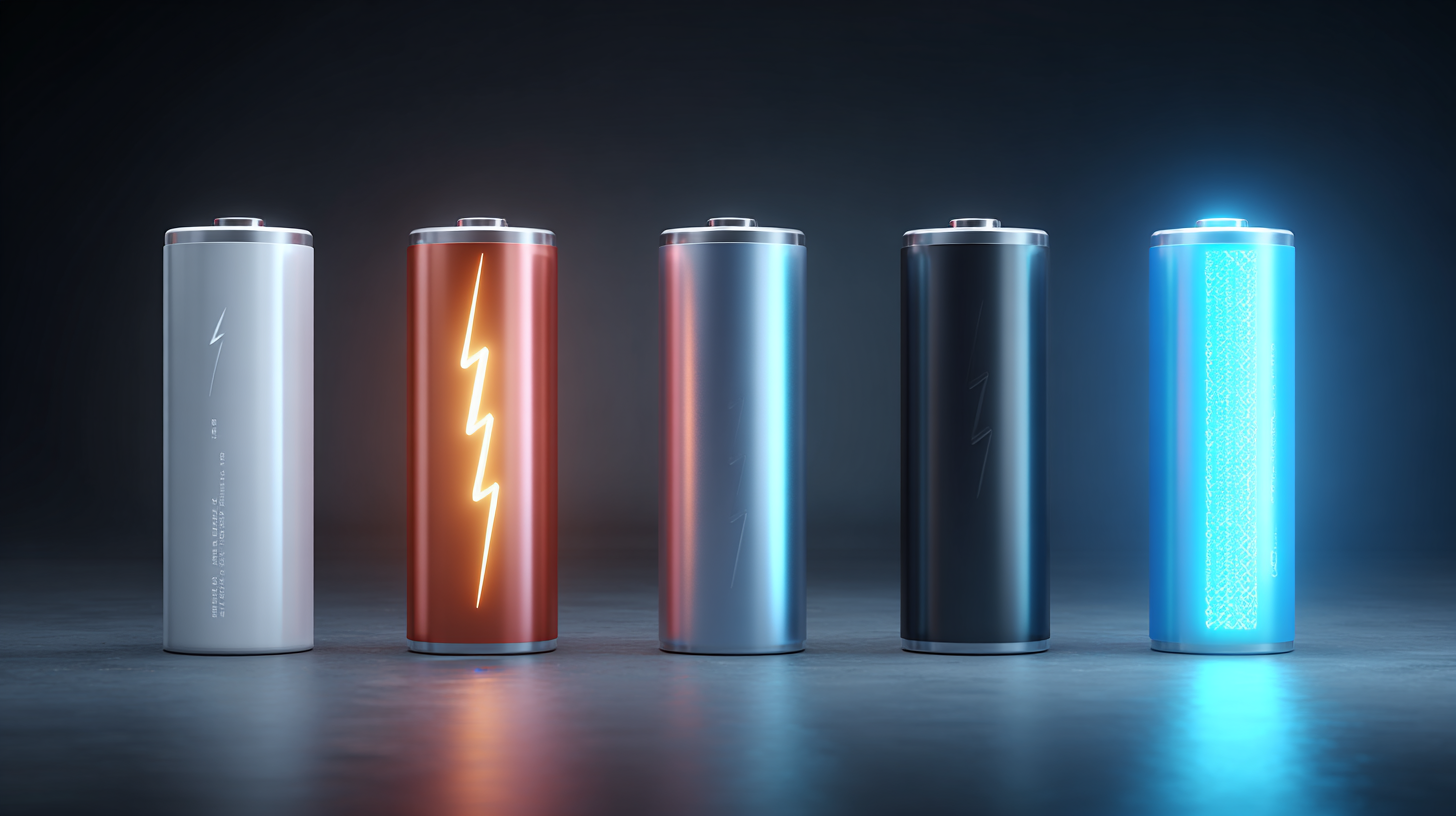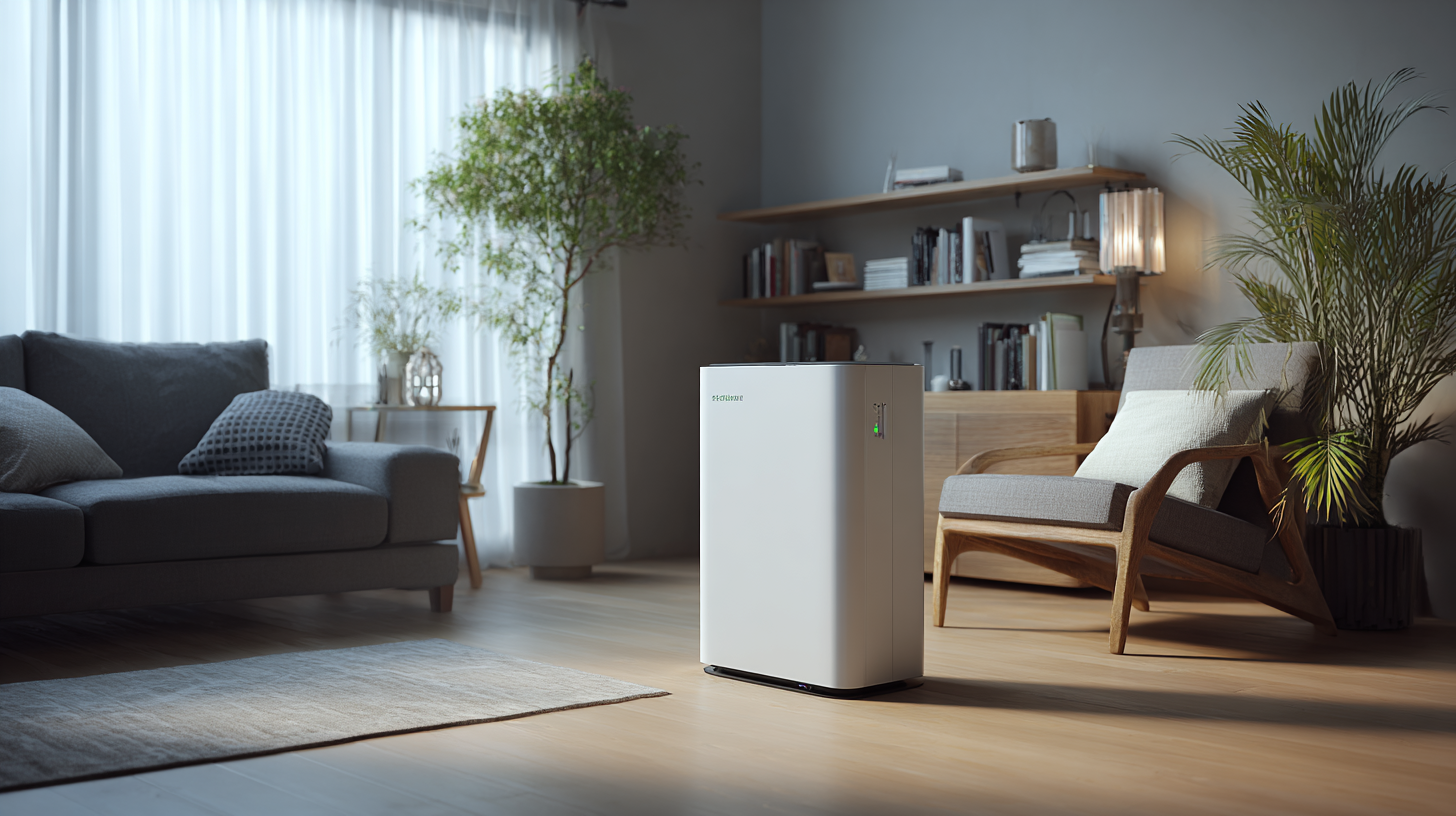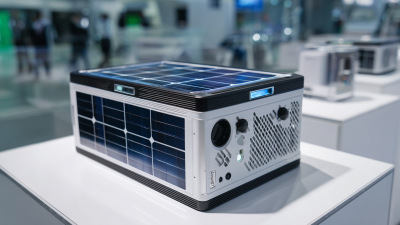7 Essential Tips for Maximizing Your Domestic Battery Energy Storage Efficiency
In recent years, the adoption of Domestic Battery Energy Storage systems has surged, reflecting a growing awareness of their role in enhancing renewable energy utilization and improving energy independence. According to a report by Wood Mackenzie Power & Renewables, the U.S. residential battery storage market is projected to grow from 3.4 gigawatt-hours (GWh) installed in 2020 to over 12 GWh by 2025, indicating a significant shift towards energy resilience. These systems not only enable homeowners to store excess solar energy for use during peak hours but also provide backup power during outages. However, to fully capitalize on the benefits of Domestic Battery Energy Storage, it is essential to maximize their efficiency and lifespan through strategic implementation and management.

The following seven essential tips will guide homeowners on how to optimize their battery storage systems, leading to increased savings and reduced carbon footprints.
Key Strategies for Optimizing Battery Charging Cycles for Longevity
To optimize battery charging cycles for longevity, it is essential to pay attention to the depth of discharge (DoD) of your energy storage system. Limiting the DoD to around 20-80% can significantly extend the lifespan of your batteries, as frequent deep discharges stress the cells and lead to quicker degradation. Employing a smart energy management system can help regulate the charge and discharge cycles effectively, ensuring that your batteries remain within this optimal range.
Another key strategy is to adjust the charging rates based on the time of day and energy demand. Utilizing a slower charging process during off-peak times can prevent overheating and reduce wear on the battery cells. Additionally, integrating renewable energy sources, such as solar panels, can help manage charging cycles naturally throughout the day. Regularly monitoring battery performance and maintaining proper temperature levels are also crucial for enhancing efficiency and extending battery life.

Understanding Energy Consumption Patterns for Effective Storage Use
Understanding energy consumption patterns is crucial for maximizing the efficiency of domestic battery energy storage systems. By analyzing household energy usage behaviors, homeowners can better manage their energy storage, ensuring that excess energy generated—especially from renewable sources like solar—is effectively stored and utilized. For instance, integrating smart technologies can lead to optimized energy management, allowing for real-time monitoring that significantly improves storage efficiency.
Tip 1: Implement IoT-enabled energy management systems to continuously monitor energy consumption. This technology allows homeowners to track their usage patterns and adjust their energy storage strategies accordingly, which is essential for ensuring that your battery supplies energy when it's needed most.
Tip 2: Leverage artificial intelligence in your energy management practices. AI can optimize the performance of energy storage systems by predicting energy demands and adapting to changes in consumption patterns, thereby enhancing the adaptability and cost-efficiency of your setup.
Tip 3: Consider integrating electric vehicle (EV) charging with your home’s energy storage. This dual approach not only maximizes energy utilization but also transforms your EV into a mobile energy source that can enhance your home's energy resilience.
Maintaining Ideal Temperature Conditions to Enhance Battery Performance
Maintaining ideal temperature conditions is critical for enhancing the performance and longevity of domestic battery energy storage systems. According to a study published by the Battery University, battery performance can degrade significantly if temperatures exceed 25°C (77°F), with a potential reduction in lifespan by up to 30%. Conversely, operating batteries at temperatures below 0°C (32°F) can lead to reduced charge acceptance and overall efficiency. Therefore, homeowners should strive to install battery systems in temperature-controlled environments to optimize their energy storage solutions.
Furthermore, the International Renewable Energy Agency (IRENA) reports that optimal battery operating temperatures can also influence energy efficiency. For lithium-ion batteries, the sweet spot is typically between 20°C to 25°C (68°F to 77°F). Maintaining batteries within this range not only ensures maximum discharge capacity but also minimizes energy losses during charge cycles. Investing in temperature management solutions, such as thermal insulation or dedicated battery enclosures, can significantly enhance the efficiency of energy storage systems, helping users to harness and utilize renewable energy more effectively while maximizing their return on investment.
7 Essential Tips for Maximizing Your Domestic Battery Energy Storage Efficiency
This chart illustrates the impact of temperature on battery performance efficiency. The data reflects average performance efficiency at various temperature ranges (°C). A better understanding of the temperature conditions can aid in maximizing battery efficiency.
Implementing Smart Technology for Real-Time Energy Management
As the shift towards renewable energy continues to gain momentum, the integration of smart technology is becoming crucial for optimizing domestic battery energy storage systems. According to a report by the International Renewable Energy Agency (IRENA), households equipped with advanced energy management systems can increase their energy savings by up to 25%. By implementing real-time monitoring and automation, homeowners can make informed decisions on energy usage, thus maximizing their storage system's efficiency.
One essential tip is to install smart energy management software that provides insights into energy consumption patterns. This technology allows users to determine peak energy usage times and adjust their consumption accordingly. For instance, using data from the U.S. Department of Energy, studies show that smart thermostats alone can save an average of 10-12% on heating and cooling bills.
Furthermore, integrating energy storage with smart home devices, like smart plugs and energy-efficient appliances, enhances energy distribution. During off-peak hours, customers can charge their batteries, allowing them to consume stored energy when rates are higher. According to Navigant Research, such integrations can lead to a 15% increase in overall energy efficiency for households relying on battery storage options. Embracing these technologies is essential for homeowners seeking to make the most out of their energy resources.
Regular Maintenance Tips to Ensure Long-Lasting Battery Efficiency
To ensure your domestic battery energy storage system operates at peak efficiency, regular maintenance is crucial. One of the key steps in this process is to routinely check the battery's connections and terminals for corrosion or loose connections. Clean any corrosion gently with a mixture of baking soda and water to promote optimal conductivity. Tighten any loose connections to ensure that energy flows freely, preventing unnecessary energy losses.
Another essential maintenance tip is to monitor battery temperature regularly. Batteries perform best at moderate temperatures; extreme heat or cold can significantly reduce their efficiency and lifespan. Ensure your storage system is installed in a well-ventilated area to maintain a stable temperature. Additionally, performing software updates on the battery management system can help optimize its performance and prolong its life. By staying proactive with these maintenance practices, you can enhance the longevity and efficiency of your battery energy storage system.


